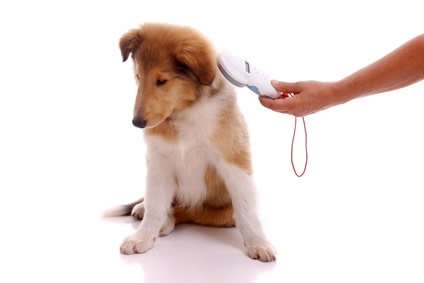Microchipping
 Identichipping your Pet
Identichipping your Pet
They are small, simple and the best way of ensuring that your pet is returned to you if lost.
We recommend a tag on your pets collar AND an ID chip. The chip is placed under the skin with a small injection. No anaesthetic is needed. each chip has a unique code which, when scanned, allows your contact information to be gained from a central database.
ALL DOGS IN WALES MUST BE CHIPPED BY LAW
10 Microchipping Facts
1. Microchipping was first introduced into the UK in 1989.
2. Microchipping is no more painful than a normal injection and can be done from an early age.
3. 126,176 dogs were found straying in the UK during 2011. The owners of 48% of these dogs were traced because their pets were microchipped.
4. Not just for dogs and cats. Microchips can be fitted to horses, rabbits, guinea pigs, lizards, fish…in fact the list is endless!
5. Microchips are made from the same material used to make human pacemakers!
6. Microchipped pets also benefit from lower insurance premiums.
7. If a missing pet is found, vets and animal wardens routinely check for microchips.
8. A microchip uses radio frequency identification (RFID) technology, exactly the same as the barcode scanners used at supermarket checkouts!
9. Each microchip has a unique 15 digit code, which is linked to the owners name and contact information.
10. Specially designed cat flaps are now available so only your cat(s) can get in and out of your home, keeping the naughty neighbourhood kittys away from your cat treats!





